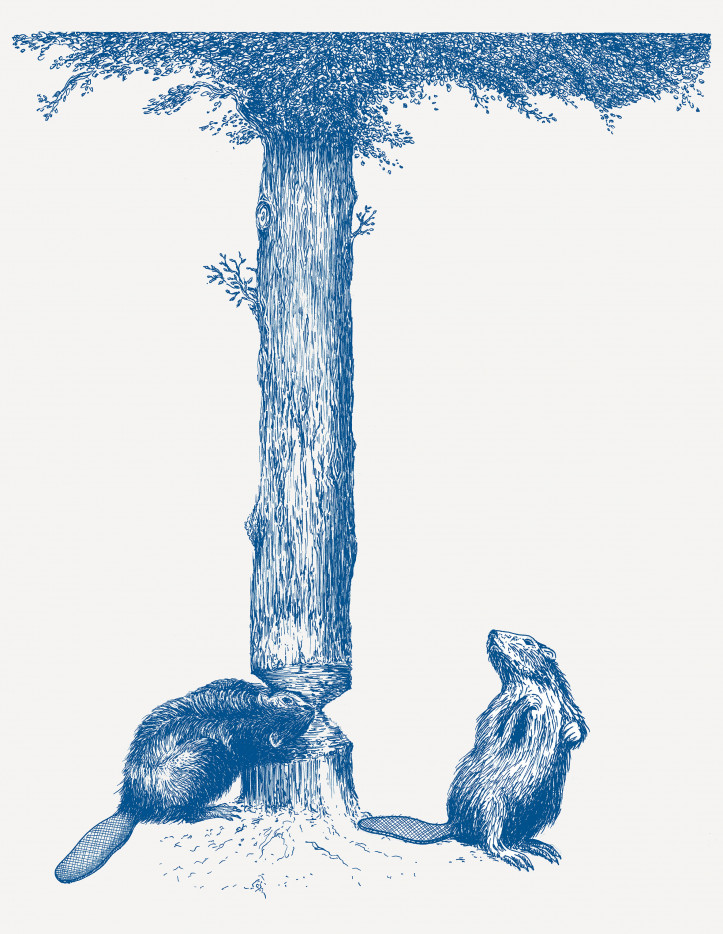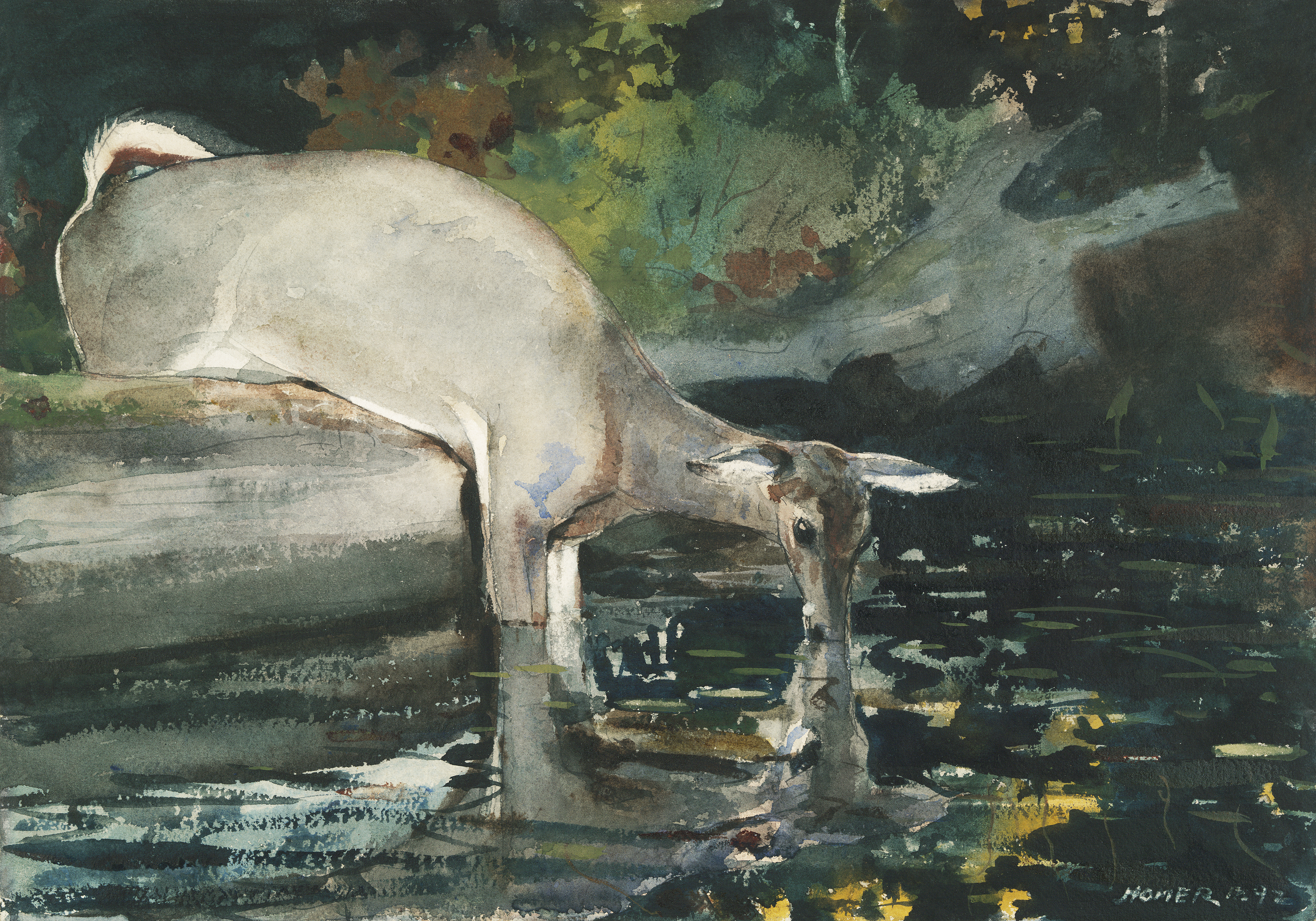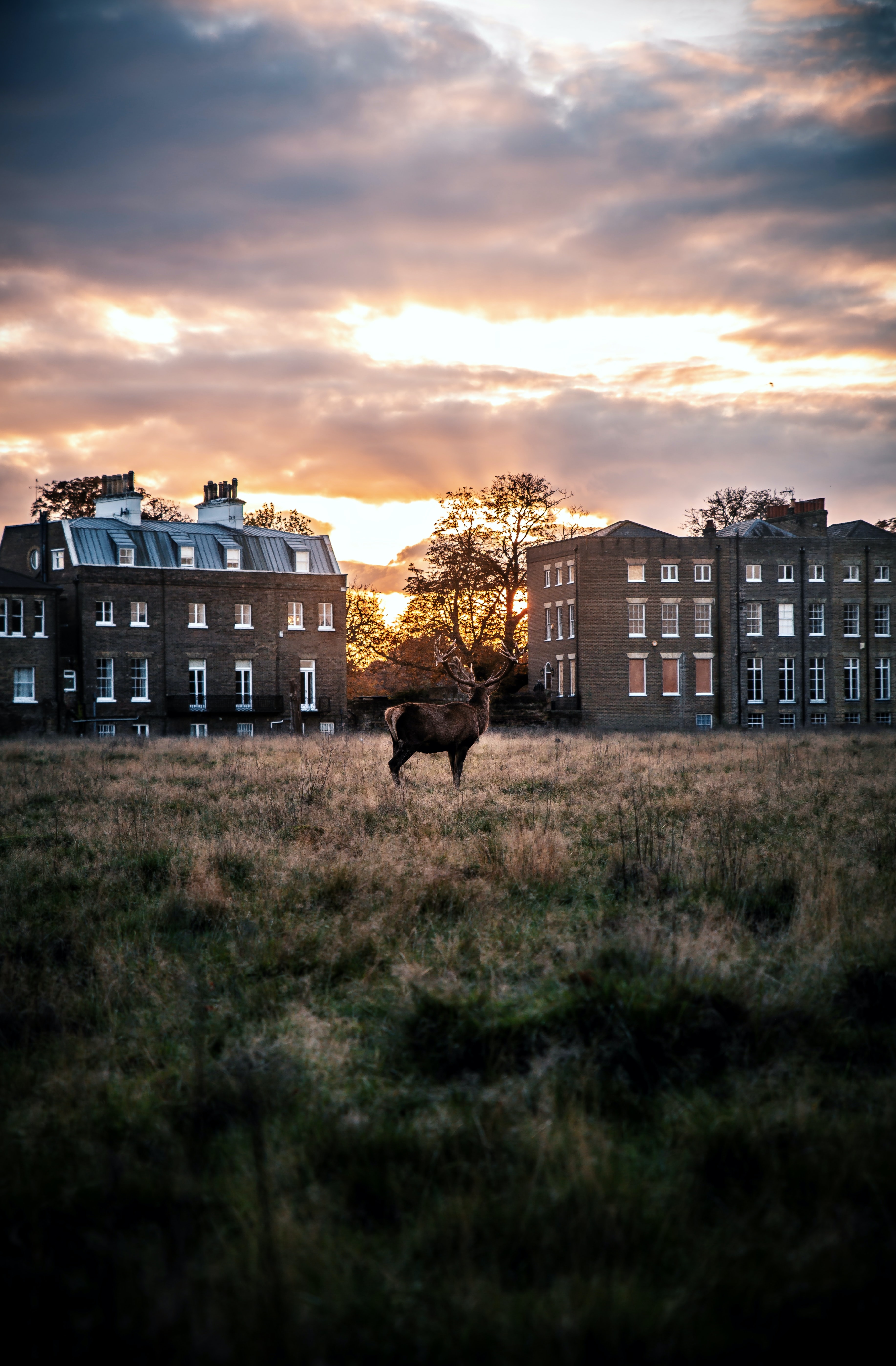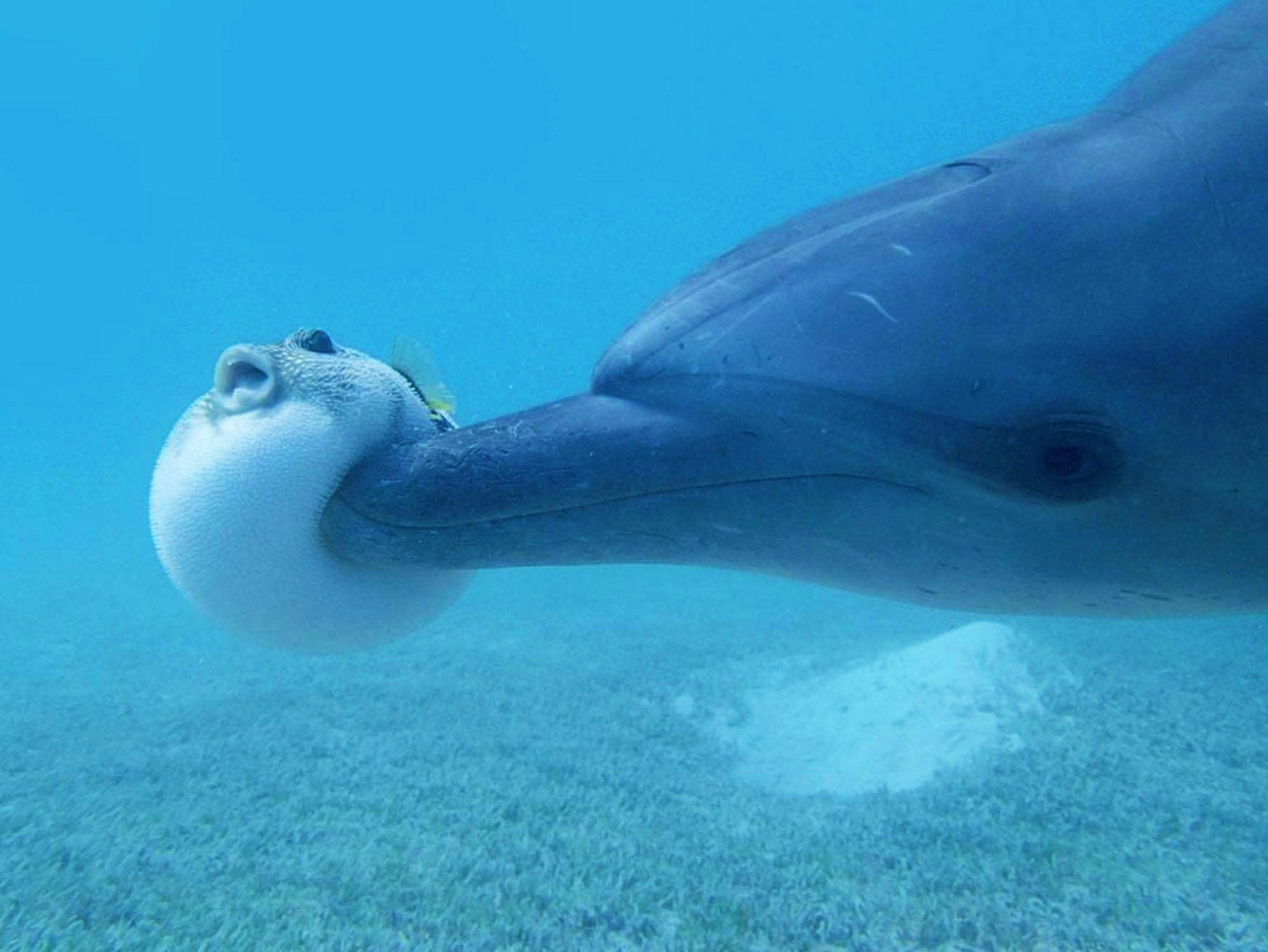
Beavers are doing better and better in Poland! And that is excellent news, because they are our allies in the fight against drought.
I had never heard such excited noises as those that Jorge was making. Jorge was a North American beaver and we met at his home in Puerto Williams, where I discovered from my hosts that he really likes biscuits. He was sitting on the floor, leaning against me, nibbling on biscuits and allowing himself to be stroked; the loud combination of joyful gurgles and grunts straight out of a cartoon confirmed that they were not lying. Puerto Williams is the southern-most town in the world, located on the Chilean Navarino Island, so it is easy to tell that a North American beaver was not exactly at home there. However, I’ll get back to beaver introduction in Patagonia shortly.
Timid and secretive
Beavers have always aroused my fascination, admiration and affection. As a child, I found a beaver skull in the forest and I still have it today among my treasures. As a student, I heard a story from the Białowieża Forest (in eastern Poland) about how, during some scientific conference, a group of more than 20 participants were on a walk, met a beaver in the middle of the path and, utterly unthinkingly, (they were botanists and might not have known, but still), surrounded the beaver in a circle snapping photos. The beaver, quite rightly, felt somewhat cornered and decided to bite his way to freedom, choosing as his target the leg of the least popular professor from my department. I liked beavers even before we met in person.
In the following years, I didn’t have that many encounters with them. When I was growing up, beavers were very rare in Poland and it was hard even to find their lodges. With time, the number of lodges fortunately started to increase, and I would wander more and more often among the bushes surrounding Masurian lakes, to where my scientific activities had been connected for many years. When I was studying the American mink, who often live in the upper layers of beaver lodges, I would find beaver homes several times a day, but their residents still very rarely, because they are generally a timid and secretive animal. My first encounter was actually with half a beaver and a tiny one at that; as I approached the lodge, I heard a splash and looked into the water. There, just below the surface, I saw the exceptionally fat bottom of a small baby beaver, who was energetically paddling with his hind paws trying to dive into a tunnel, in defiance of the buoyancy of his fat. The animal’s front half had already made it in.
I have beavers to thank for one of the most surreal experiences of my time working in the field. One day, I was making my way through thick bushes on the western shore of Lake Śniardwy with Paweł, my Master’s student. At a certain moment, we came across a massive black alder tree, freshly felled by these mammals, with the clear traces of teeth and red shavings all about. Paweł enthusiastically cried out “Beaver!”, and at that moment, the top half of a topless woman emerged from a jetty hidden in the nearby undergrowth. She automatically said “good morning” to us, then lay back down, disappearing behind the reeds [the Polish plural for ‘beavers’, bobry, rhymes with the ending of ‘good morning’, dzień dobry – ed. note]. We hadn’t even remembered that there was a jetty there, and here was such a surprise!
Over the years, I have seen beavers more and more often, although I don’t traipse through the bushes so much anymore, as I have exchanged my forest life for polar beaches and wilderness. Fortunately, however, the beaver is having an ever-better time in Poland; several of my recent encounters have taken place on the rivers and canals of the cities of Wrocław and Warsaw.
Blades in their mouths
The Eurasian and North American beavers are nearly the largest rodents in the world, reaching a weight of 30 kilograms. Ours in Europe is slightly larger, but both are beaten only by the capybara. As with all rodents, beavers have incredible incisors that grow throughout their lives. In contrast to our teeth, which are covered in a hard enamel all around, rodent incisors are covered by a hard enamel on the front surface, but behind there is a softer dentine. In truth, rodents have to file their constantly growing teeth continually, because otherwise they would start digging into their skulls. When they file them, an extraordinary thing happens – the dentine wears down more than the enamel, thanks to which the tooth retains its sharp, chisel-like profile and, as it wears off, is constantly sharpened like the blade of a sword made of layers of steel of varying hardness.
In the case of beavers, they file their incisors chiefly on wood. These rodents are even able to cut through thick trees and, at the same time, even more impressively, they do it so intelligently that the trees fall where they want them to. As is easy to imagine, in the case of this skill, natural selection played a rather strong role. Flattened beavers do not pass on their genes. In effect, beavers are very effective and precise lumberjacks. The cut trees often become the base of the construction of beaver dams, and they always provide the thinner branches and twigs necessary both for construction projects as well as food.
If the banks of the reservoir or watercourse are steep, the beavers often dig burrows whose entrances are below the water line and have a dry nesting chamber higher up connected to the surface with a ventilation chimney. However, dams and lodges are the most typical beaver constructions. Their dams are constantly inspected and repaired, and the construction they make is so solid that, according to old descriptions, one can ride over them on horseback. Above the dam, a floodplain is created, and this is why beavers are considered to be the species that manages best to actively change the environment (after humans of course, but people create these rankings). Somewhere on this floodplain, they build their lodge, which looks from the outside like a gigantic pile of branches. This earth-and-wood construction also has at least one entrance below the waterline and, higher up, a dry, ventilated chamber. The building is so spacious that often other animals also live there, such as mink and various birds, which keep out of the beavers’ way. The entire family of beavers lives in the nest and, although their young sometimes fall prey to mink, the adults are generally effective in defending them. Apart from providing a place for the lodge, the floodplain also secures access to more trees and bushes, and provides an easy way to transport the cut branches that are stored under the water as food supplies for the winter. The beavers can then eat the leaves that they live off from under the ice. When times are tough, beavers also fill their bellies with wood, but this is only in extreme desperation. In reality, they feed off the soft parts of plants; not only tree leaves, but also grass and various green plants growing along the shoreline and under the water.
Beavers are not an important component of the diet of any predators, although their natural enemies, such as wolves and lynxes, do occasionally hunt them. The results of recent research on wolves, in particular young wolves, conducted by Dr Robert Mysłajek’s team, found that beavers are a favourite snack, comprising nearly 20% of their diet. However, the role of beavers in the ecosystem is enormous. Thanks to their passion and construction skills, they create a living environment for many species of aquatic animals and plants; from newts and frogs to birds, mink and water shrews.
Leave them space
From the human perspective, the most useful service provided by beavers is their work in the area of low water retention, as they stop the water flow, which, without them, would flow away, drying out significant areas. Particularly now, in light of the unprecedented drought that scientists are warning of, the role of beavers in water retention cannot be underestimated. The planned costs of implementing the current Polish government’s Retention Development Programme is 12 billion złotys (around £2.5 billion), and beavers do this not just better, but also for free. Of course, these rodents sometimes flood fields and meadows, or damage the levees – in the Mazovia region alone the losses run to 3.9 million złotys (around £800,000) per year on average, while in the Warmia and Mazuria region, this number amounts to 7.5 million złotys (around £1.5 million). However, we are quick to forget that it is not so much beavers who enter our territory as we who carry out our activities on theirs. Beavers range up to several dozen metres from the water, so one of the simplest ways to limit our losses is just to leave them be. In certain cases, we can also use other simple methods: put metal netting around trees, put pipes through beaver dams that are inconvenient for us and protect the banks. Beaver eradication programmes – which we hear about from time to time (most recently in the Mazovia region they planned to shoot 1500 beavers) – and destroying their dams sometimes bring the opposite results to those intended, because if a given family is murdered, sooner or later it is replaced by new animals who will have to cut down more trees to sort out or rebuild the dam. Thankfully, hunters themselves are not very interested in hunting beavers, because it is hard work, you have to tramp through soggy ground and stalk them for a long time, and the benefits from it are not great, as there is no demand either for beaver meat or fur.
And here we return to Jorge. Since humanity has an astonishing ability not to learn anything – and never, whatever the cost, learns any lessons from earlier mistakes – every so often we introduce foreign species to different parts of the world, normally with catastrophic results. In 1946, the Argentinian authorities came up with a cunning plan for the economic regeneration of Patagonia and imported 10 pairs of beavers from Canada in the hope that the locals would happily start to hunt them, and that the fur trade would kick off and bring eternal riches for all. However, the good folk of Patagonia are practical and wise people. It is easiest to hunt beavers in the winter, but then it is cold. And when it is cold, they sit at home instead of traipsing through the bushes. In other words, in contrast to the beaver population, the trade in their skins never took off. But the beavers flourished in Patagonia and did what they do best, shaping their environment. The thing is that in Europe, Asia and North America, where these rodents occur naturally, their activities help to maintain the native ecosystems, while in Patagonia, these exact same activities are causing the destruction of local forest communities and a fall in biodiversity. Eradicating beavers there will be difficult work indeed, if not impossible.
The Brave and the beavers
In the old days, however, beavers were in fact hunted. Bolesław Chrobry [Bolesław the Brave, less often known as Bolesław the Great, Duke of Poland from 992 CE to 1025 CE, and the first King of Poland in 1025 CE – ed. note] even banned hunting them on his dominion, not out of mercy but in order to monopolize the activity. Beavers gave not only excellent fur, but also the so-called beaver’s outfit (or castoreum, a discharge from the cutaneous glands used to make perfume), as well as tallow, used for myriad more or less magical medicinal practices. I remember this, because, during my teenage years, the scene of the beaver hunt from the 1960 film Knights of the Teutonic Order (Krzyżacy) was my favourite scene, burning deep into the delicate psyche of an adolescent young man [in order to recover the beaver, one of the female characters had to remove her clothes – ed. note]. Beavers have always been present in Polish culture, and perhaps one of the strangest old wives’ tales was that they allegedly bite off their own testicles to buy off the hunters and escape with their lives, which Jerzy Bralczyk writes about in his excellent, recently-published book Zwierzyniec [Bestiary]. As the author correctly concludes, after such an operation, the beavers must be rather sad, hence the Polish saying “he cried like a beaver”.
As a result of hunting, the population of European beavers began to fall from the early Middle Ages. Monks greatly contributed to this by persuading the Pope almost 1000 years ago that the beaver was really a fish (because it lives in water and its tail looks as though it is covered in scales), thanks to which they feasted on beavers on Fridays and during Lent.
In North America, beavers were often the subject of Native American myths, serving as a totemic animal and regarded as protectors of the human tribes. In my favourite story, the beaver is boasting to the other animals about his beautiful, fluffy tail. But for some reason, no-one else shares his delight. So the beaver gets angry, and because of this he carelessly cuts down a tree at a bad angle. The tree falls towards him, so the beaver jumps out of the way, but doesn’t quite make it and the tree lands on his tail. When he eventually manages to wriggle free, his tail is flat and bald and the beaver falls into despair. The Creator cheers him up, saying that a tail like this is better because it will help him swim and warn his friends about danger; beavers do in fact slap their tails on the water when they feel threatened, making a loud splash. Since then, the beaver has had a flat tail and likes it very much.
If you like Kurt Vonnegut – as I do – you will surely know about some of the more recent connotations attached to the name of this fascinating animal. Without going into detail, I will say only that it is connected to the beaver fur wigs that prostitutes sometimes used.
These rodents, which inspire our imaginations, are admired for their skills all around the world. Luckily, in Poland their population has increased since World War II, from a few hundred animals to around 100,000. And this is a good thing, because, quite simply, we need them; not just us, but the whole of nature.

Translated from the Polish by Annie Jaroszewicz










